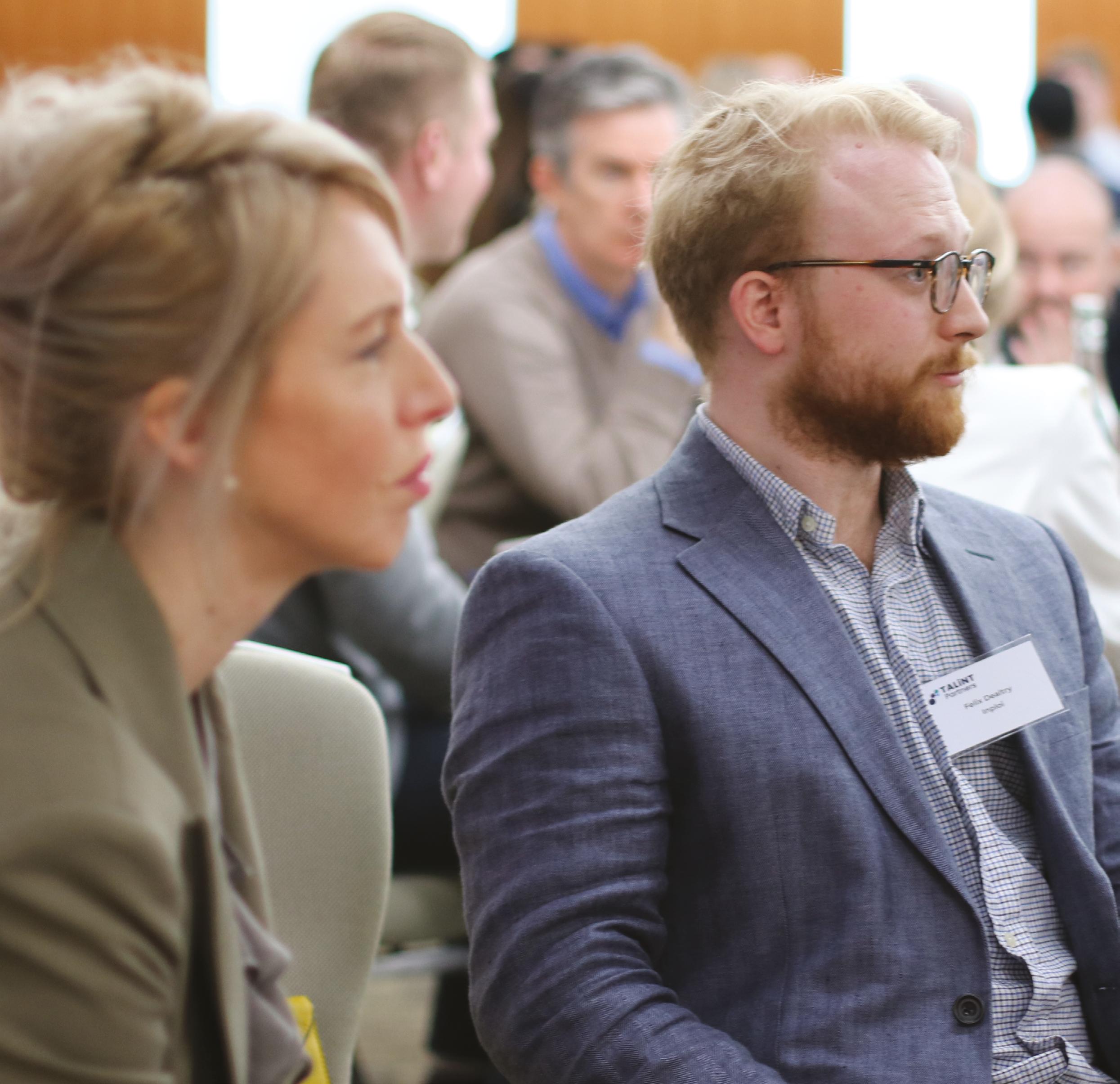TALINT PARTNERS EVENTS

The team talked TA & TS in NYC
ALIGNED VISION
Interview with VP & Head of People at TOCA Football


The team talked TA & TS in NYC
Interview with VP & Head of People at TOCA Football
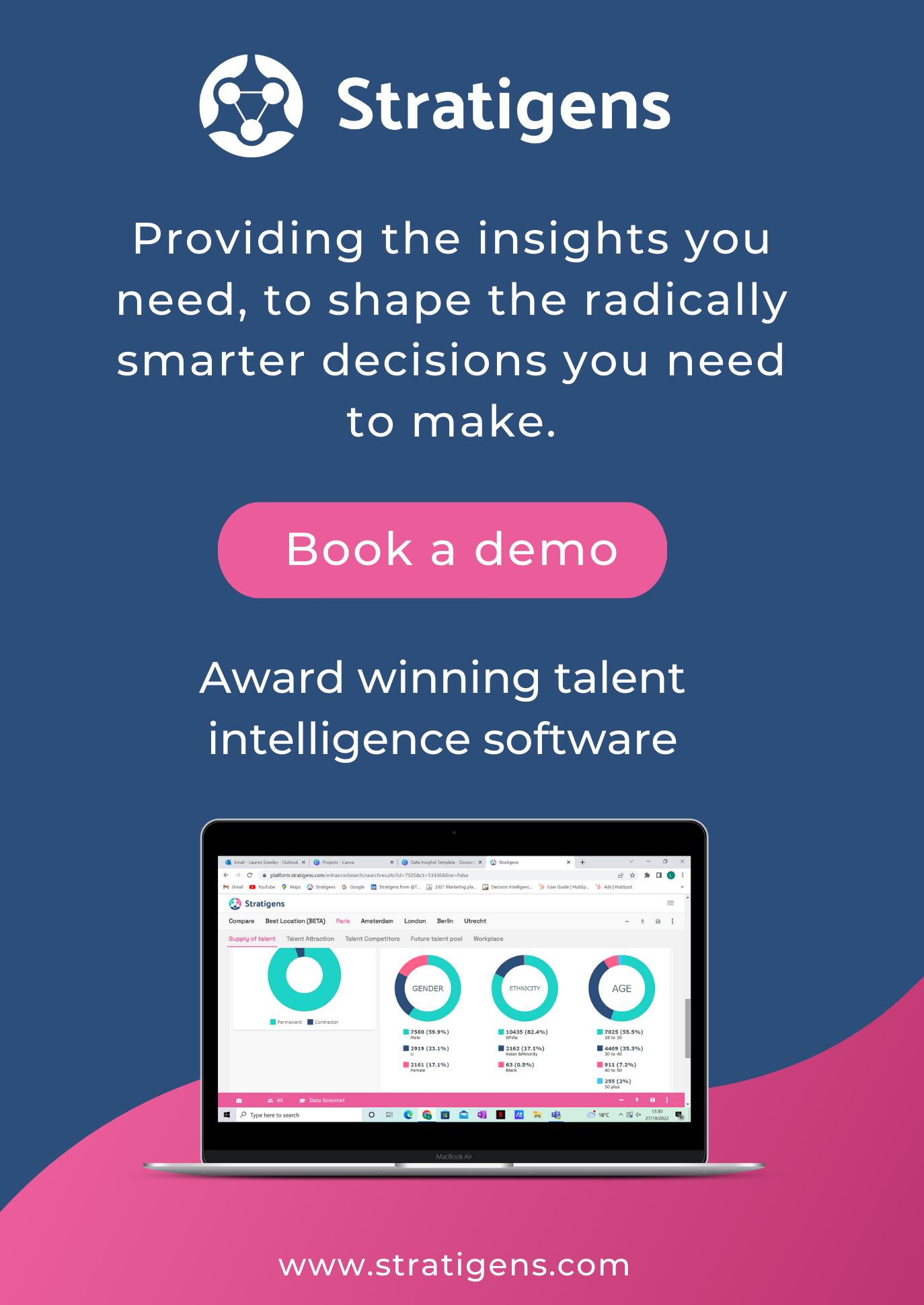
I remember in my first Ed’s Letter of the year in January. I said that I was hoping to just ease quietly into 2023 and not be burnt out in a few months – but while I’m not quite burnt out, it’s certainly been an exceptionally busy first quarter, and I’m looking very forward to a holiday in the sun in a few weeks.
Based on the news we report on here at TALiNT Towers, it’s safe to say that while the job search market has cooled down somewhat this year, it remains a very strong, candidate-driven market. EVPs, employer brands and technology have advanced and evolved to support the hiring process, to free up recruiters’ and the TA team’s time to concentrate on building relationships with candidates and source the best talent for their clients and organizations.
But it seems that game-changing technological advancements and streamlined office processes have left one thing unchanged over the last 30
Debbie Walton Editor, TALiNT Partnersyears, and that is the candidate experience. In a talent scarce market where recruiters and employers are struggling to find the best people to work in their organizations, you’d think that the candidate experience would take center stage, so why isn’t it? In this issue, we’ve written about the candidate experience; read about it on page 12.
The TIARA Awards season has officially begun with entries for the TIARA Talent Acquisition Awards and Talent Tech Star Awards open! And whilst it’s our busiest time of year, it’s also the best because we get to celebrate the best in class across the talent ecosystem while dressing up and having some fun too.
So while the year may have begrudgingly started off with a bang, I’m really enjoying the ride. I hope you are too.
TALiNT Partners brings together a global network of leading employers and solution providers to make better talent and technology decisions by providing intelligence, insight and peer-to-peer networking that drives quality, innovation and improves inclusion across the talent ecosystem.
www.talintpartners.com

Editorial, news and features: debbie@talintpartners.com

Advertising and sponsorship: andy@talintpartners.com
Design: annabelle@talintpartners.com
Layout and design: New Media Design Agency www.newmediadesign.co.za










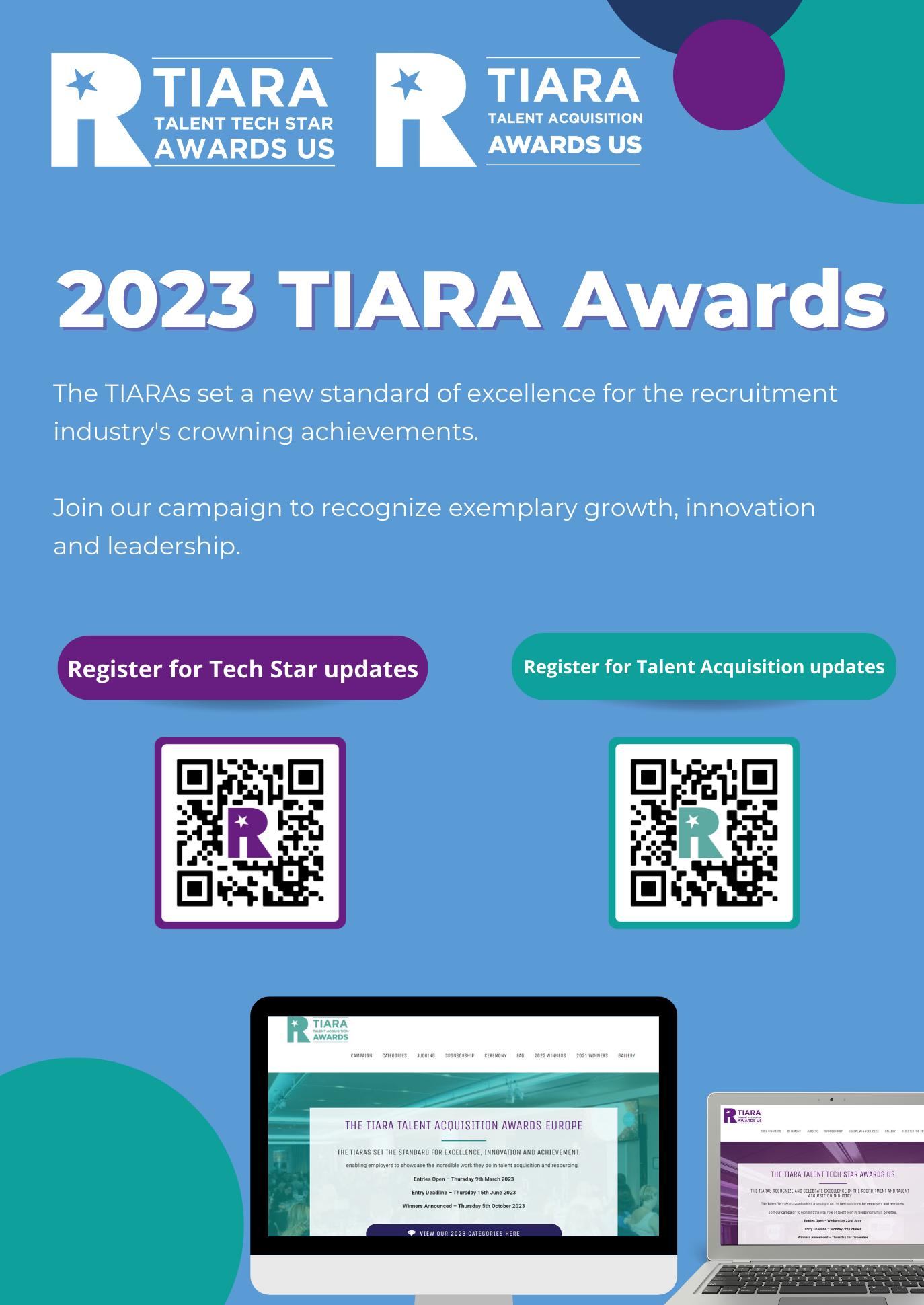
TALiNT Partners went from NYC, to Boston where we broke bread with talent acquisition and recruitment leaders to debate tech trends and challenges that are affecting TA and recruitment teams in a difficult market. Conversation flowed as did the wine – we can’t wait to go back!
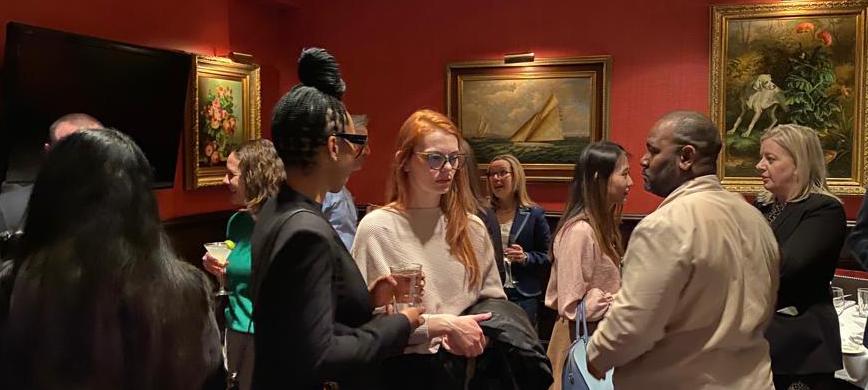
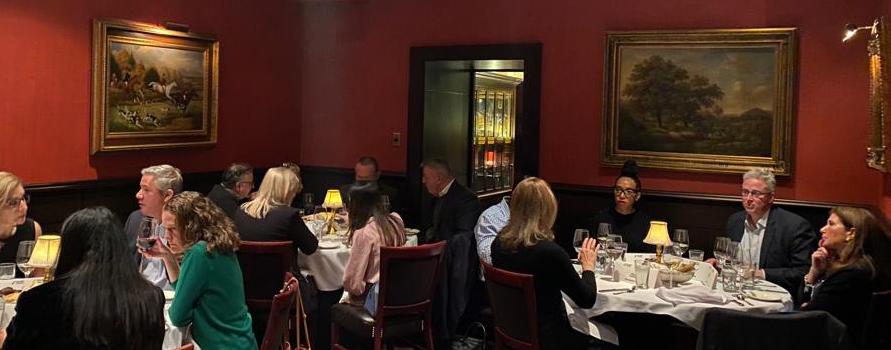
March 21
From labor market analytics to employee performance, data is everywhere. It’s no longer about whether you have talent intelligence, but how you utilize it effectively. This is a top concern of CHROs; and we explored how you can move from data to actionable intelligence over a delightful dinner and a glass of wine or two.
The Capital Grille, New York
March 22
Back to the fabulous Capital Grille for this invitation-only event to bring together leaders from the sector’s most innovative and successful businesses to share their perspectives, priorities and predictions.

TALiNT Partners CEO and staffing industry veteran, Ken Brotherston, along with TALiNT Partners’ Country Manager, Ray Culver and Dave Cox of Mercury xRM hosted a debate that covered topics from how tech is transforming recruitment, to how recruiters are making the most of their data and tech. The food and drink was so good the night before, we just needed an excuse to return!
The Capital Grille, New York
March 23
In times of uncertainty, agility and sustainability are central to strategic priority. Nowhere is that more apparent than in the current talent acquisition market. How can organizations balance stability and employee retention with scalability and responsiveness in an employment market which is both turbulent and unpredictable?
TALiNT Partners in partnership with SevenStep, hosted an invitation-only dinner for Talent Leaders tasked with building strategic workforce plans which will be sustainable in 2023 and beyond.


Less than half of US businesses offer nontraditional benefits, including flexibility in work hours and location, despite an increasing number of American workers seeking such benefits, according to a recent survey by The Harris Poll commissioned by Express Employment Professionals. The survey found that only 47% of hiring managers offer flexible work hours, while 40% offer flexible work locations, part-time work, or unpaid parental leave.
Furthermore, there is a gap between the benefits companies offer and what employees want. The survey revealed that 62% of employees believe it is important for companies to offer flexible work,
while only 51% of hiring decision-makers report offering this benefit.
In addition, the survey found that 54% of hiring managers anticipate traditional benefits to remain unchanged in 2023, while only 37% expect an increase in traditional benefits.
The report also notes that 64% of hiring managers have modified benefits to retain current employees or attract new ones.
Moreover, the survey found that 63% of employed Americans would quit their job and find a job closer to where they live due to commuting costs.
47% 62%
Number of hiring managers who offer flexible working
Number of employees who want flexible working
51%
Hiring decision makers who offer flexible working
A recent global survey from Executive Networks reveals that many employees don’t see the value in commuting to work as organizations continue to adjust their pandemic-era workplace policies. Of the 1,300 knowledge workers surveyed globally, only 28% feel their companies make it worth the commute, while 46% say their employers are not doing anything to make returning to the workplace more appealing. Despite this, about half of workers still believe being in the office is beneficial for career advancement. The survey also highlights a “proximity bias” against remote or hybrid workers, which can hinder their progress in the company, as acknowledged by 71% of senior HR leaders and 62% of senior business leaders.

The report highlighted the importance of upskilling as the critical aspect of organizational success this year. HR and business leaders believe skills-based training should be used as a retention tool, and knowledge workers want access to coaches and online courses. Upskilling can also help reduce burnout, which is a significant factor in employees leaving their positions.
It’s important to navigate workplace policies and flexible arrangements with employee needs and unique organizational factors in mind. While Generation Z workers report stifled career growth due to a lack of on-site work experience, employees with remote and hybrid schedules may feel more psychological safety and ease in discussing difficult situations with colleagues. The report concludes that organizations can gain a competitive advantage in this new world of work by adding creative benefits, designing a workplace that attracts employees, and better equipping workers and managers for flexible working.
While tech companies continue to layoff staff, Pluralsight has published a report highlighting the strain felt by managers trying to maintain control. Although most tech managers are under pressure to cut costs, the data revealed that 72% of team leaders plan to invest in upskilling their existing workforce. The report states that 100% of those surveyed believe in prioritizing the development of their current staff instead of hiring new talent.
As the economic uncertainty of 2023 places a burden on tech team managers, the domino effect of tech layoffs leads to teams that are palpably strained. Pluralsight data suggests that managers in data analytics, IT, and software engineering are finding their team members taking on more responsibilities, with 67% of respondents confirming this. Moreover, 47% of those surveyed admitted to performing additional duties outside of their job description.
Reinvestment in upskilling remains the preferred method of survival for companies as the effects of tech layoffs continue to ripple through the industry. Pluralsight’s data shows that about half of the respondents agreed that the uncertain economic times call for new tech skills. In 2022, the tech skills gap narrative took center stage, with researchers positing that 1 in 3 workers do not have the necessary foundational skills required to enter most jobs.
Working on-site isn’t worth the commute 1 in 3 workers lack foundational skills required to enter most jobs
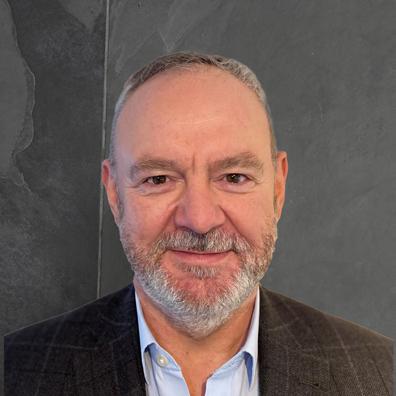
On March 21 we headed back to one of my favorite cities in the world, New York, for our latest HR and Talent Leaders’ dinner, along with our friends and partners at Resource Solutions.
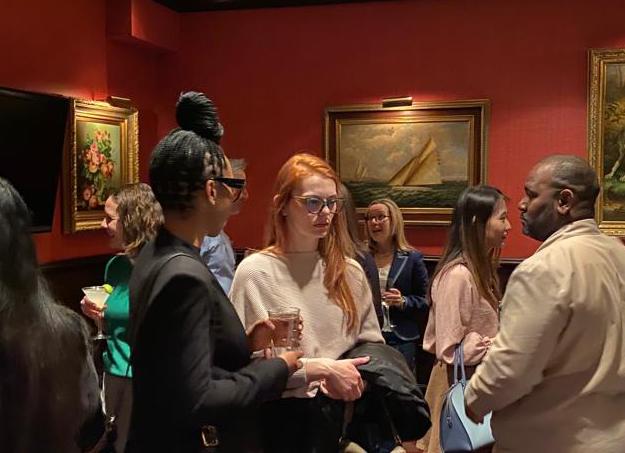
As ever, our discussion ranged from the high level (where’s this recession everyone keeps talking about?) to the operational (read on for some juicy insights on ‘vanity metrics’) but nearly everything came back to our over-arching theme of the importance of Talent Intelligence (TI).
TI, of course, starts with data but our three key takeaways on this point were:
• Stop talking about data, start talking about insights
• And these need to be embedded into your day-today conversations, not brought out for quarterly presentations and business reviews
• Conversely, beware of ‘mission creep’. TI isn’t a panacea; be clear about what you’re trying to achieve and when TI is relevant.
We also had a lively discussion on the seductive nature of ‘vanity metrics’ – NPS scores being a good example (people who really hated whatever you’re measuring almost certainly didn’t complete the scoring!). Perhaps the most interesting vanity metric was ‘agency spend’. This is often the first area any new TA leader takes an axe to as it’s a great way to show maximum impact in the shortest period of time. But here’s the thing: if it ultimately takes you longer to get the person you need or it’s not quite the candidate you were after then agency spend reduction is counterproductive. It may be more complicated, but it’s far better to measure the cost of vacancy and not cost per hire.
None of this is to say that uncontrolled agency costs are ok, of course they’re not, but deploying staffing firms judiciously and being prepared to stand your ground when challenged was seen as a far better longer-term approach.
As the wine flowed, we turned to the increasingly obligatory discussion on the rise of ChatGPT. Everyone agrees it will ‘move the dial’ but quite how and when are less clear. There remain some quite significant concerns on data security and algorithm integrity so having been bitten by this before, don’t expect the largest firms to be taking the lead on it anytime soon.
As the evening drew to a close, a few final words of wisdom reflected that the increasingly effective use of data and talent insights reflects the ongoing maturation of talent and HR functions and that most value will be gained from using TI to look forward and support strategic decision making, specifically in how to drive upskilling and internal mobility and how to better engage and nurture early talent.
Until next time… but hopefully with not as long a gap!
On March 22 at the Captial Grille in the Big Apple, TALiNT Partners & Mercury presented the Power of the Possible!
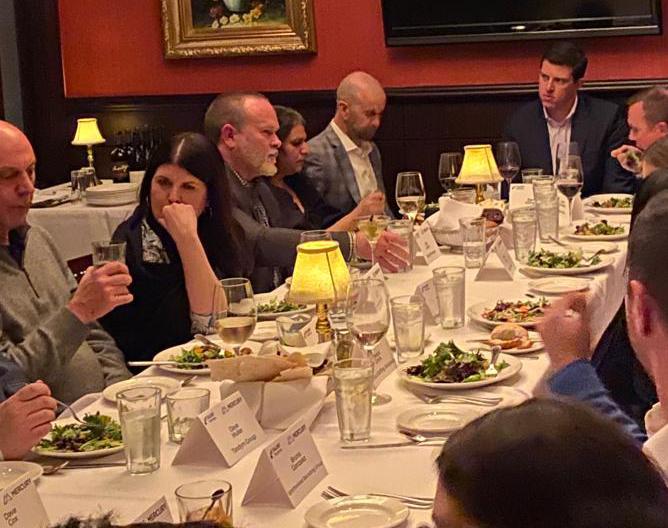
Having wined and dined with a lively and engaging group of HR and talent leaders the previous evening, it was back to the Capital Grille again to host a highly influential group of recruitment and staffing leaders to hear their views on the current market and share their perspectives on how things will evolve for the rest of the year.
In the year when the global staffing industry smashed through the $500b barrier, it is worth reminding ourselves just how crucial a role the industry plays in helping employers find and keep the people they need, and what came across loud and clear is that challenge has never been more important or more complex.
Ostensibly, the broad theme of our discussion was techrelated, and in particular, how we use technology to foster better relationships, not just create more efficient processes. This is especially important to our partners for the evening, Mercury. Although, as with all recruiters, the discussion took a much more wideranging turn.
With the impact of remote working having a significant impact on the staffing industry, there is still a lively debate on what this is doing to productivity levels. The general view is that we won’t really have meaningful data on this until 2024 but there is a realization now that we have to be measuring interactions in different ways, often driven by the complexity of the role that is being filled. For many standard, shift-based positions (healthcare, warehouse work and the like) the majority of engagement is often by text with little, if any,
traditional phone work. Clearly for more complex hiring processes and individual roles the trusty telephone still has an important role to play. This does give rise to the potentially controversial prospect of using AI, not to monitor frequency and length of a call, but the quality and effectiveness of the consultant’s conversation! More fundamentally there is a view that, especially for top performers, traditional metrics are well past their sell by dates and a new paradigm is needed.
And whilst using tech to build better relationships is all well and good, it is important to remember its fundamental role in protecting business assets. With cyber security insurance premiums now reaching exorbitant levels, the criticality of data protection has never been more important and increasingly candidates and clients need assurance that recruiters’ systems and data are secure. This will not diminish.
Likewise, as state by state legislation becomes more frequent, the role of tech in supporting core processes and ensuring appropriate compliance becomes ever more important and, indeed, a prediction that we will see more consolidation between staffing firms and tech platforms was seen as pretty much inevitable.
As we tried to sum up the trends and drivers of tech transformation, there were a couple of key themes: a lot of technology adoption will be driven by what the younger generation expect and what they will respond to (often described as ‘meeting them where they are’). Ultimately, of course, mentality matters most: the best tech won’t fix a bad consultant and human to human interaction, despite what ChatGPT might throw at us, still underpins all that we do. I’ll drink to that, in fact we all did!
In the current economic climate, overall hiring is holding up reasonably well considering key skill shortages continuing. This might offer some relief for internal TA (Talent Acquisition) leaders to focus on strategic priorities instead of dealing with crises. However, candidate experience seems to have drifted down the priority ranking. Our exclusive TA Benchmark report shows a polarisation between a smaller number of organisations improving candidate experience and a larger number going backwards.
Technology has advanced at a rate of knots, and automation is transforming applicant tracking systems and back-office systems in such way that a recruiter’s time is freed up to do what counts: forge relationships with clients and candidates.
But it seems that game-changing technological advancements and streamlined office processes have left one thing unchanged over the last 30 years and that is the candidate experience. In a talent scarce market where recruiters and employers are struggling to find the best people to work in their organizations, you’d think that the candidate experience would take center stage, so why isn’t it?
We reached out to talent leaders in our talent ecosystem and asked some pertinent questions to determine whether they agree, or if we’ve just got it wrong…
Does an improved candidate experience enable a better employee experience?
The respondents unanimously agreed that a positive candidate experience can lead to a better, more inclusive employee experience. To achieve this, organizations need to focus on developing a consistent, scalable candidate experience that meets candidates where they are, tailors messaging, and ensures clear communication throughout the process.
A positive candidate experience can attract a more diverse candidate pool, foster a culture of inclusion and respect, enhance engagement, and ultimately lead to higher levels of employee satisfaction, productivity, and retention. Improving the candidate experience can also improve an organization’s reputation and lead to referrals – reiterating the importance of the employer brand. To build inclusive teams, organizations need to provide positive and flexible candidate experiences from attraction through to hire, and improving the
candidate experience will lead to more diverse applications that can help teams perform better.
It seems that the experience of candidates echoes our sentiments. We spoke to several candidates who said after applying for literally hundreds of roles, the received personal responses from a mere 30% of recruiters! One candidate said that finding a new role after being made redundant was ‘soul crushing’ and ‘exhausting’.
Another candidate said that it was a full-time role trying to find one because of the unfriendly user experience on a company ATS. She said, ‘I clicked on the “apply now” button, was taken to a page to upload my CV and then on the next page, I had to enter my CV manually to apply! It takes hours to apply for one role!’
The candidate went on to say she then received an automated response to say that if she doesn’t hear
Debbie Walton Editor TALiNT Partners
TALiNT Partners
back after two weeks, to consider her application unsuccessful.
If the candidate invested hours applying for a role, they should be entitled to a personal response – even if it is just informing them that they didn’t get the job.
Charles Handler, President of Sova US said that there are ATSs (Applicant Tracking Systems) out there that facilitate an easy application process. ‘Tech has a significant impact on the candidate experience in many ways. For example, there are a variety of candidate engagement platforms that allow applicants to apply for jobs more quickly while also providing a branded experience. Tech also supports automation of administrative tasks and makes it easier for recruiters to communicate with applicants. Communication is essential for the candidate experience but has proven difficult until the age of automation and increased communication channels.’
‘Technology can make a significant difference to the candidate experience, as it can streamline the recruitment process, increase efficiency and provide a more personalised experience for candidates,’ agreed Mark Baker, Director of Claremont Consulting
Technology supports internal teams but doesn’t seem to be helping the candidate as its designed or expected to do.
Felix Dealtry, Senior Account Director at Inploi believes there is room for improvement. ‘We can do better. Clunky careers sites, application forms that are not optimised for mobile with unnecessary registrations are affecting your conversion rates and hurting your employer brand. If good is good enough, you will lose great people to other businesses.’
So, if efficient processes are in place, which elements of the candidate experience can recruiters improve to add more value as partners?
Neil Griffiths, Managing Director at Ceriph said: For many years there has been an ongoing debate around the role of the recruiter. A true ‘candidate partner’ should ‘dissuade’ a candidate as much as attract the right candidate. Sharing content that is relevant, considered and covers each of the differentiators that an employer has, shows the candidate that a journey has not only been created, but tailored towards their needs. So, from the language used in an initial message or conversation, through to the delivery of an interview decision - the key is for the recruiter to think about how they have left the candidate feeling as a human being.’
Recruiters and TA teams are a candidate’s first and only point of contact and should be an extension of the employer brand they’re hiring for. They play a crucial role in creating a positive candidate

experience and should be focussed on building good relationships by simply communicating throughout the hiring process – even if unsuccessful.
‘Recruiters need to be responsive if candidates reach out and support them through the process, answering questions and ensuring they have all the information they need. Recruiters can also provide guidance too. This personal touch will make organisations stand out and ensure engagement and trust are built with candidates during the recruitment process, allowing Recruiters to become a true value adding partner,’ said Lyndsay Chapman, Head of People at Talos360
‘As organisations work on improving the candidate experience, they need focus on developing a consistent process that applies to all candidates. Many candidate experiences lack consistency across different groups, which creates inequity. Developing a consistent, scalable candidate experience allows organisations to monitor each step to identify where and why different applicants are self-selecting out or who are removed from the selection process,’ commented Miranda Hanes, Global Client Partner, Sova Assessment.
It’s also often forgotten that word of mouth is a powerful endorsement of an employer brand. If a candidate has an enjoyable candidate experience –whether they’re successful or not – they’re likely to share this with others. An organisation’s reputation attracts all the right people and automatically widens the talent pool.
Let’s be honest, when TA teams and recruiters are having to work harder to find talent, treating a candidate like a human being can’t hurt. Every single candidate is a customer of your business and customers who are treated well refer friends and are loyal and both of those form part of a winning formula in a talent scarce market.
1.
Make sure you’re hiring to fulfil a real need: a good candidate experience is one that has a clear purpose and goal. This starts with ensuring that you and your organisation are crystal clear on what you need from a skills and talent perspective, and what type of candidate will fill those gaps.
2. Make it easy for candidates to apply for jobs: ATSs can be cumbersome. Is it really necessary for a candidate to upload their CV and then on the next page have to manually input their experience?
3.
Communicate: you cannot put a price on the personal touch. A simple, nonautomated response is all a candidate would like, whether they advanced to the interview stage or not – just let them know!
4.
Ask yourself whether it’s necessary to have four or five rounds of interviews: while the candidate is talking to you, you can guarantee they’re talking to other potential employers. Dragging out the hiring process is a sure-fire way to lose good talent.
5.
Be open to giving feedback: everyone deserves closure. If a candidate has gone through four interviews and didn’t get the job, tell them why in a positive and constructive manner. This last interaction will leave a lasting good impression and the candidate may apply for another role and refer people in their network.



TI: As VP and Head of People at TOCA Football, what is the biggest workplace/ team challenge you’ve faced in the current economic climate?
KW: During the height of the pandemic, we faced the challenge of scarce labor especially in the service sectors. In today’s inflationary environment, we are faced with keeping up with wages, to ensure teammates feel valued
Kiy Watts Vice President & Head of People TOCA Footballand can meet their basic needs like housing and groceries. The uncertainty of the economy and witnessing the biggest names in tech reducing their workforces almost daily creates anxiety and fear. Most conversations with employees are around the stability of the organization and how to support financial and mental well-being.
TI: We’ve recently written a feature on hiring for culture. What do you believe comes first: create the culture? Or hire for cultural fit?
KW: This is a great question and a great opportunity for the function of Human Resources to align with business priorities and imperatives. Culture is the practices, processes, and norms of an organization. Whether a start-up or mature organization, every organization needs a clear vision of who they want to be and where they want to go. HR should build culture around the organization’s vision.
When tasked with building culture, I start with the following questions: what’s the vision for the organization? What do we want to do? Who do we want to be? Who do we serve?
Does the vision include innovation, creativity, expanding access, creating opportunities, and inclusion? Do the values of the organization align with the vision, the people align with both vision and values? When it doesn’t, HR practices and systems should be evaluated to create alignment. Using hiring practices as a starting point, poke holes at how you approach how you attract and select talent. Does it align with the vision? Do your practices support hiring innovative, creative, diverse talent? If not, adjust by creating practices that respond to the vision.
TI: How do you maintain a positive and empowering culture in business?
KW: Employees need to see the alignment of their work and contribution to the purpose and vision of the organization. When our day-to-day work can be mapped back to the broader purpose and objectives of the organization, employees feel connected, but importantly empowered to perform and do their best work.
At TOCA Football, we are focused on creating a culture around three performance drivers, which allow our teammates to have fun (play), have a greater sense of purpose in their work, and potential for personal and professional growth.
All aligned to the employee lifecycle and key employee touch points where the objective is a positive and empowering culture.
TI: As a people strategy expert, what are the biggest obstacles facing organizations today when it comes to staff?
KW: Navigating competing priorities within the organization is often a challenge, which is where a clear vision helps. For example, marketing, product, operations, and finance all need to be rowing in the same direction.
A trusted relationship with the CEO on vision, will help pull functional areas together. CHRO’s need the support of the CEO to drive the people strategy. Once full support is gained, getting all others to row in the same direction, makes creating and driving a People strategy based on business imperatives much easier.
TI: DE&I plays a huge role in business’s hiring and culture strategies. Do you find that post-pandemic gains have been made in DE&I through effective talent solutions?
We saw a plethora of companies making statements and stances around DE&I following the tragic murders of George Floyd, Breonna Taylor and Ahmaud Arbery in the summer of 2020.
We are seeing some companies double down on their
I hope this is a moment in time for companies to reflect and reset and not abandon the progress that was made because we will have work.
DE&I commitments, but we are also witnessing a backtrack as layoffs are impacting DE&I teams and marginalized groups during the economic downturn.
I hope this is a moment in time for companies to reflect and reset and not abandon the progress that was made because we will have work.
TI: Looking to the future, what trends do you see emerging in the talent market?
• Understanding and responding to the skill gaps of Gen Z entering the workforce

• Developing leadership capabilities to manage change, multiple generations, and business dynamics while keeping people first
• Putting Diversity, Equity, and Inclusion at the front of the recruiting process not as a check in the box task.
TI: You’re a judge at this year’s TIARA Talent Solutions Awards. What innovations do you see coming out of this year’s entries?
KW: I hope to see innovation around streamlining and automating the recruitment processes, particularly creating a simplified candidate experience showcasing the employer brand.
Along that same vein, innovation around leveraging actionable data which can help HR leaders make decisions around DE&I, internal skills, competencies, and mobility. I would love to hear of an entry aligning vision and culture to drive business imperatives and people strategy.
TI: What does being a judge for the TIARAs mean to you?
KW: I’m honored to be selected as a judge for the 2023 TIARA Talent Solutions Awards. Last year I had the privilege of speaking on a panel during the Talent and TIARAs Conference and was so impressed with the quality of the experience, best practices shared, and networking opportunities.
To be selected as a judge this year is a great responsibility because we are ultimately validating and substantiating the approaches, trends, and best practices under consideration.
Technology is there to support and to accompany relationships between players in the world of the contingent workforce. TI talked to Etienne Colella, Founder and CEO of Pixid about how its solutions have evolved over time and its global footprint. Pixid’s fast-to-deploy, multi-lingual, multi-currency system, is groundbreaking cross-border solution that is solving the day-today operational challenges in the mid-market contingent work space.
TI: Tell me about Pixid’s journey within the talent tech space. How has the Pixid solution evolved over time?
EC: Pixid started in 2005 as a traditional Vendor Management System (VMS) addressing the complexities of the Temporary Labor Market in France; however, by working closely with staffing agencies, we realized that they lacked the ability to fully digitize day-to-day contingent staffing processes for their mid-market customers; therefore, we decided to develop technology specifically addressing this need.
By working closely with major global staffing agencies, we were able to closely align our R&D with market requirements, developing Pixid VMS into a fast-to-deploy, multi-lingual, multi-currency
system, with the agility and versatility required for cross-border application. Pixid VMS has since evolved to bring the key advantages of a traditional VMS in a more affordable, agile package ideally suited to non-complex projects of any size.
As a result, Pixid has become the largest Europeanowned provider of recruitment technology, with our VMS deployed in 39 countries to over 130,000 client locations by 8500 agency branches. enabling the digitalized management of 250,000 worker assignments daily.
TI: In your opinion, what role should technology play in a contingent labor program?
EC: We think that technology should play an important role in a contingent labor program,
 and
and
but it should always do so in a way that supports the recruiters and program managers, increasing the efficiency of their daily operations. It also needs to meet the end-users’ requirement for increased transparency, with more and more data delivered to them when placing a temp on a work assignment.
Technology should also assist the candidates and workers – for instance, making it easy for them to upload documents, fill in timesheets etc, as well as assisting with their onboarding and payment.
TI: In today’s contingent labor world what are table stakes for a Vendor Management System (VMS) to be taken seriously?
EC: One of the major challenges for today’s contingent labor world is the lack of available and skilled talent. So the ‘modern’ VMS should accelerate the flow of candidates to the end user, in a reliable and efficient manner, enabling management of the whole process. Only then will it maximize value and minimize costs for stakeholders.
A VMS must also be user-friendly, smooth integration capabilities and strong analytics and reporting capabilities.
TI: What does “next generation” VMS mean to you and Pixid?
EC: A “next generation” VMS must enable the relevant data to flow seamlessly from the candidate to the end user, which in terms of platforms, means from the ATS to the VMS. Unfortunately, too often, this is not the case and the 2 worlds s communicate clumsily. At Pixid, our Pixid Hub universal application connector is designed specifically to overcome this issue. This tool uses integration and automation to help transform the talent management capabilities of agencies and their end-clients, bringing about a more unified talent acquisition approach, as compared to the previous generation of VMS.
TI: Should a VMS enable the user to make more informed decisions? How? What features are best suited for this enablement?
EC: Yes, it is a key element of a VMS to enable informed decision making by its users. That means providing them with the right information, presented in a clear manner at the right time. Having to go through multiple screens, copying / pasting information etc… is no longer acceptable; a customizable dashboard type screen, clearly displaying
Founder
CEO Pixid
Technology needs to meet the end-users’ requirement for increased transparency, with more and more data delivered to them when placing a temp on a work assignment.
KPIs such as time-to-fill, cost per hire and other relevant real-time information will help ensure a more informed, data-driven decision-making process.

TI: In a contingent labor program, where is the intersection between the user and the technology? How far should tech go and what elements should remain with the user?
EC: The intersection between the user and technology occurs throughout the entire process, from job requisition to the selection, onboarding and offboarding of the workers.
The technology should facilitate this whole process, but the user should make the final decisions about which candidates to hire and how to manage the contingent workforce, based on the specific needs of the end-client organization.
Throughout this process, the technology should always be designed to help the user; adapting to the user’s needs, rather than the user having to adapt to the technology.
Of course, technology is also a way to enhance the efficiency of a process, and this will inevitably lead to certain adjustments by the user, in the way they work, to enable them to get the most of the technology - but, once again, technology must be at the service of the user, with the user ultimately in control.
Technology needs to meet the end-users’ requirement for increased transparency, with more and more data delivered to them when placing a temp on a work assignment.

A platform to help you with end-to-end visibility and control of your contingent workforce process.

Set up your clients and their process by your own on the platform and start working with them right away.
Access all your clients from a single portal (as Master vendor or Direct supplier).
NO INVESTMENT
PIXID VMS is a proven plug & play service. Fast and simple to roll out – with no set-up fee for you and your clients.


Contact us on www.pixid-vms.com
PIXID Group is the European leader in smart technologies dedicated to staffing, recruitment and temp work

At TALiNT Partners we’ve been banging on for ages that the workforce and talent agenda isn’t just something that has never been more important but is actually the most important issue organizations face, and it seems the chancellor agrees with us.

Rarely has a budget been more focused on the issues of helping employers find and keep the people they need and support for families with young children (code for ‘get more women into work’), and the ‘returnerships’ for us oldies will hopefully stimulate employers more generally to think differently and more creatively about how to build the workforces for today’s economy.
These are important and necessary proposals that help to address the structural challenges facing the UK in improving labor accessibility
and, hopefully, in time the wider challenges around productivity.
But sober and sensible is not always the order of the day. There has also been a lot of noise this week around a University of Exeter piece of research on the impact of ‘Sunday night blues’ on mental health and wellbeing. Where to even start with this? The infantilization of people and this propensity to treat everyone as a victim or somehow vulnerable needs a short, sharp poke in the eye. It would be laughable if it didn’t have the effect of actually doing a dis-service to people with genuine mental health issues.
But just when I thought I couldn’t be any more incensed, it turns out it’s interview week on The Apprentice. I have written about this before and
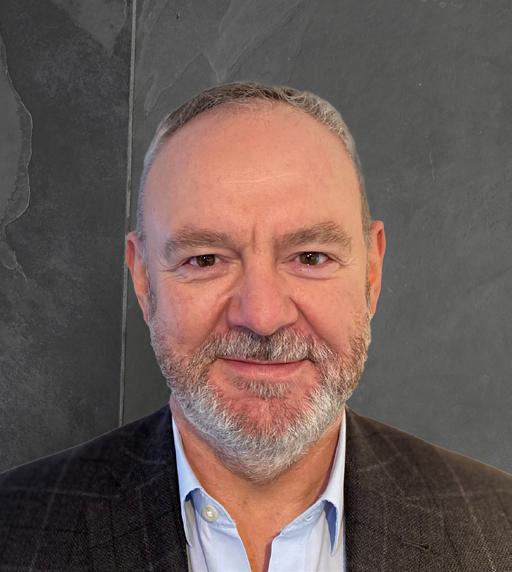
how the The Apprentice’s approach does a terrible dis-service to genuine entrepreneurs and business more widely. But watching Karen Brady (or Baroness Brady to the plebs or anyone she doesn’t like) conduct ‘interviews’ took my blood pressure to a whole new level. I get that it’s really an entertainment show but watching her humiliate the various candidates was simply cruel. And her pathetic attempts to build them up wasn’t kind, it was condescending.
What sort of message does this send to anyone, especially young people, about how they might be treated, or worse, how they think they should treat other people in the workplace?
The Apprentice is a throwback to a different time. I’m not sure it was ever reflective of how business gets done this century, but it now doesn’t feel funny, or quaint, just nasty.
The UK has some significant challenges on how to engage a post-pandemic workforce effectively, and we have a long and successful track record of entrepreneurs being a fundamentally important part of the answer.
So, whilst I applaud moves to get more women and older people into the workplace, and even yield a little bit on trying to minimize the ‘Sunday Scaries’ there are only two words I have for The Apprentice, and we all know what they are.

The UK has some significant challenges on how to engage a post-pandemic workforce effectively.
Connecting the talent ecosystem: we bring together a global network of leading employers and solution providers to make better talent and technology decisions.
